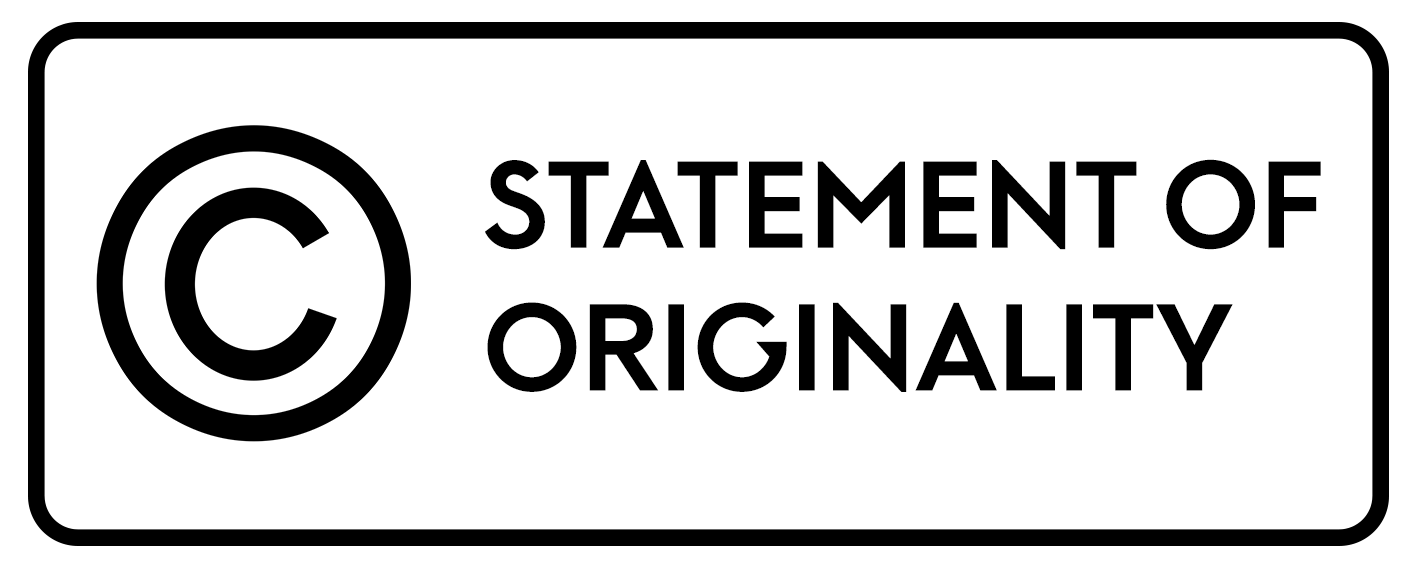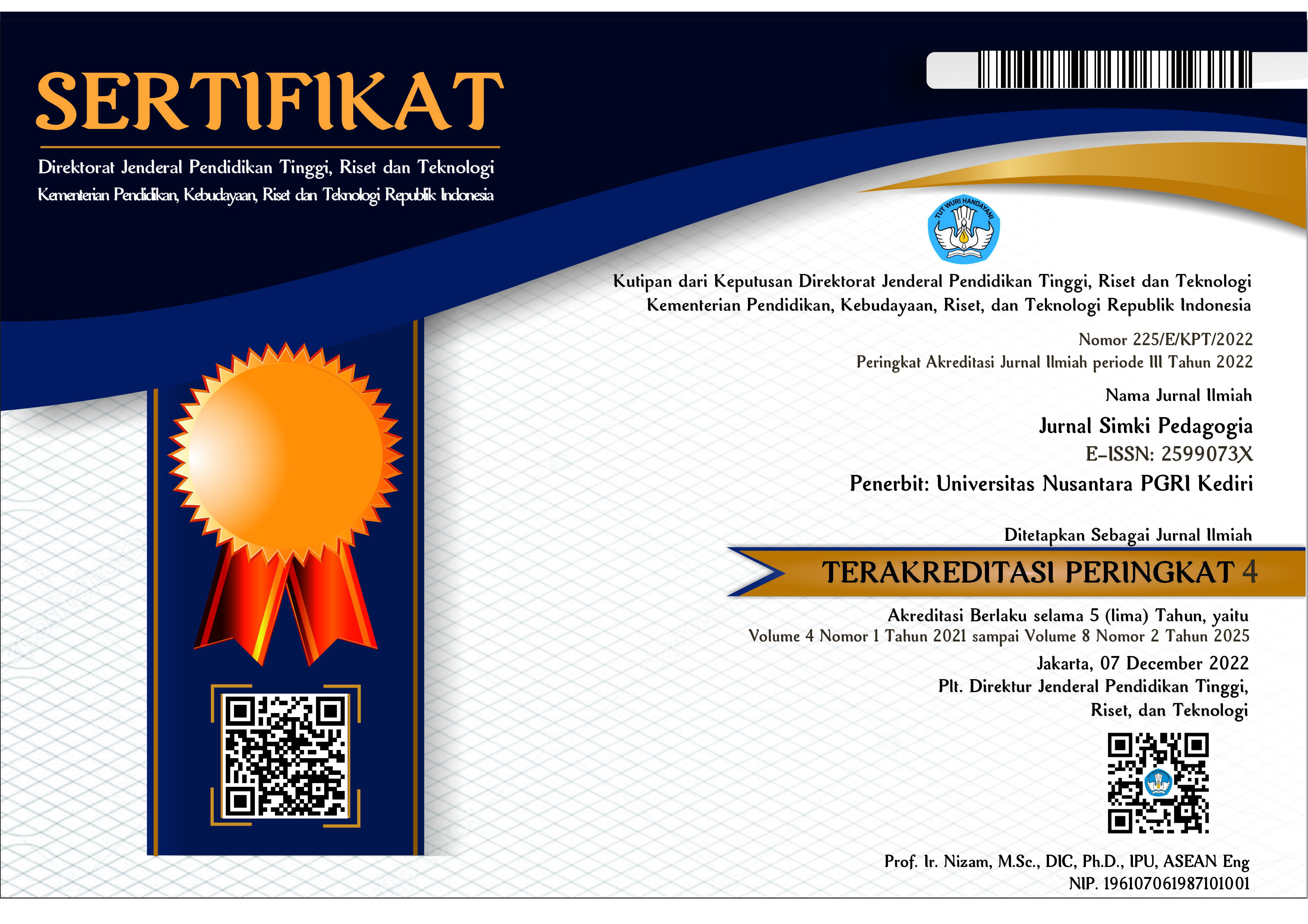Potensi Limbah Industri Marmer sebagai Media Pembelajaran Kimia Kontekstual berbasis Green Chemistry di SMAN 1 Campurdarat
 Abstract views: 149
,
Abstract views: 149
,
 PDF (Bahasa Indonesia) downloads: 67
PDF (Bahasa Indonesia) downloads: 67
Abstract
This study aims to explore the potential of marble industry waste as a contextual chemistry learning medium that supports environmentally friendly learning practices in a high school located in a marble-producing area. The research uses a descriptive qualitative method to investigate how marble waste, particularly in the form of calcium carbonate powder, can be utilized in chemistry learning to minimize the use of hazardous chemicals and reduce laboratory waste. Data were collected through field observations at local marble industries, interviews with industry workers and chemistry teachers, and documentation of the marble processing stages and waste materials. The data were analyzed using a descriptive technique to interpret the findings based on real conditions in the field. The results show that marble waste has significant potential to be used in simple chemistry experiments such as acid-base reactions, identification of chemical compounds, and the study of geological processes. The use of locally sourced waste materials enhances students' understanding of chemistry concepts, increases learning motivation, and contributes to a safer and more sustainable school laboratory environment. The findings suggest that local industrial materials can be integrated effectively into science education to create meaningful and environmentally responsible learning experiences.
Downloads
References
Adi, I. M. M., Suweta, I. M., & Dewi, P. I. A. (2021). Pengembangan bahan ajar kimia berbasis potensi lokal untuk meningkatkan literasi sains siswa. Jurnal Pendidikan dan Pengajaran, 54(2), 88–97. https://doi.org/10.23887/jpp.v54i2.35692
Albright, H., Stephenson, C. R., & Schindler, C. S. (2021). Incorporating green chemistry into chemical education. Journal of Chemical Education, 98(4), 893–901. https://doi.org/10.1021/acs.jchemed.0c01209
Aubrecht, K. B., Bourgeois, M., Brush, E. J., MacKellar, J., & Wissinger, J. E. (2019). Integrating green chemistry in the curriculum: Building student skills in systems thinking, safety, and sustainability. Journal of Chemical Education, 96(12), 2872–2880. https://doi.org/10.1021/acs.jchemed.9b00390
Chrislando, A. (2019). Penerapan pembelajaran berbasis proyek dalam penguatan karakter peduli lingkungan pada peserta didik. Jurnal Ilmu Pendidikan, 25(3), 217–225. https://doi.org/10.17977/um048v25i32019p217
Firdaus, M., Kurniawan, A., & Latifah, R. (2023). Efektivitas model pembelajaran green chemistry berbasis eksperimen dalam meningkatkan hasil belajar. Jurnal Pendidikan Sains, 11(1), 23–31. https://doi.org/10.21009/jps.v11i1.2105
Handiyati, T., Qomariyah, S., & Kurniawan, J. (2023). Peran pembelajaran berbasis lingkungan dalam meningkatkan pemahaman peserta didik. Pendekar: Jurnal Pendidikan Berkarakter, 1(4), 86–105. https://doi.org/10.51903/pendekar.v1i4.297
Ichwanto, M. A., Samodra, J., Herwanto, H. W., Rofiudin, A., Wibowo, A. A., Prasetya, L. A., & Martin, D. (2025). Optimizing Pait Village profile for growth and community empowerment. Jurnal Pengabdian Pendidikan Masyarakat (JPPM), 6(1), 142–155. https://doi.org/10.52060/jppm.v6i1.2826
Marganda, F. (2022). Penguatan literasi lingkungan melalui pendekatan pembelajaran berbasis potensi lokal. Jurnal Pendidikan IPA Indonesia, 11(3), 145–154. https://doi.org/10.15294/jpii.v11i3.30117
Mitarlis, Azizah, U., & Yonata, B. (2023). Inovasi pemanfaatan limbah industri sebagai sumber belajar kimia. Jurnal Pendidikan Kimia, 8(2), 119–130. https://doi.org/10.17977/um026v8i22023p119
Mukhlishin, H. (2024). Transformasi pembelajaran sains melalui pendekatan berbasis lingkungan dan green chemistry. Jurnal Pendidikan Sains Berbasis Masyarakat, 3(1), 12–25. https://doi.org/10.31234/osf.io/ghx3d
Naziah, R., Caska, C., Nas, S., & Indrawati, H. (2020). The effects of contextual learning and teacher’s work spirit on learning motivation and its impact on affective learning outcomes. Journal of Educational Sciences, 4(1), 30–43. https://doi.org/10.31258/jes.4.1.p.30-43
Putri, Y. E., & Putra, A. Y. (2023). Pengembangan media pembelajaran berbasis potensi lokal. Jurnal Inovasi Pendidikan Sains, 7(1), 50–58. https://doi.org/10.15294/harmony.v8i2.61930
Septiani, T., & Sarjono, A. P. (2025). Strategi pengelolaan limbah produksi kerajinan marmer di CV Manunggal Marmer. Jurnal Sains dan Teknologi, 1–7. https://journal.utsmakassar.ac.id/index.php/JST/article/view/28
Slovinsky, E., Kapanadze, M., & Bolte, C. (2021). Green chemistry in science education: Insights into students’ environmental attitudes and conceptual understanding. International Journal of Science Education, 43(5), 695–712. https://doi.org/10.1080/09500693.2021.1882100
Slovinsky, E., Kapanadze, M., & Bolte, C. (2021). Green chemistry in science education: Insights into students’ environmental attitudes and conceptual understanding. International Journal of Science Education, 43(5), 695–712. https://doi.org/10.1080/09500693.2021.1882100
Sugiyono, D. (2013). Metode penelitian pendidikan: Pendekatan kuantitatif, kualitatif dan R&D (Ed. ke-20). Bandung: Alfabeta.
Supriyanta. (2021). Internalisasi nilai peduli lingkungan melalui pembelajaran kimia kontekstual. Jurnal Pendidikan Karakter, 11(2), 220–229. https://doi.org/10.21831/jpk.v11i2.38792
Vavo, P., Vinansia, A., Rahayu, P., & Rosa, Y. Y. (2023). Strategi pengembangan pembelajaran kontekstual berbasis kearifan lokal dalam kurikulum merdeka. Jurnal Pendidikan Nusantara, 4(2), 75–84. https://doi.org/10.31227/osf.io/x2a5b
Copyright (c) 2025 Dian Ariani, Divan Robi Pangestu, Dwi Purwanto, Fitri Amaliyah, Imam Suroso

This work is licensed under a Creative Commons Attribution 4.0 International License.

Jurnal Simki Pedagogia : https://jiped.org/index.php/JSP/index is licensed under a Creative Commons Attribution 4.0 International License.
















